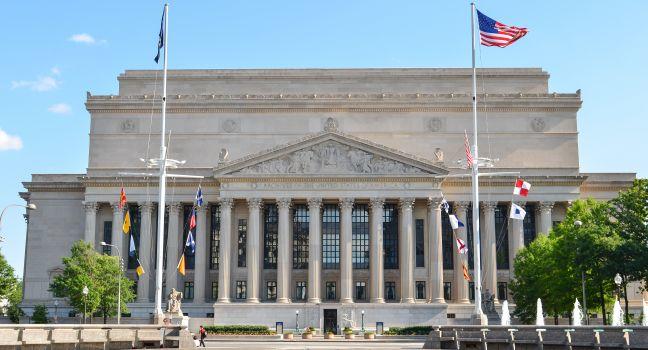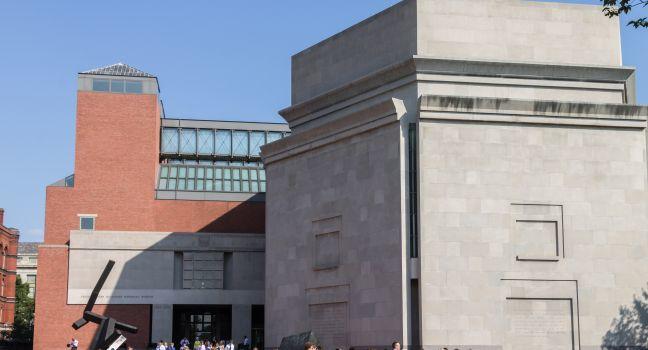National Archives Museum

Monument, museum, and the nation's memory, the National Archives, headquartered in a grand marble edifice on Constitution Avenue, preserves more than 13 billion paper records dating from as far back as 1774, more than 40 million photographs, and billions of recent electronic records. The National Archives and Records Administration is charged with preserving and archiving the most historically significant U.S. government records at its centers nationwide and in presidential libraries. Admission is free, but reservations are recommended during the busy summer months and cost a nonrefundable $1. Head to recreation.gov at least six weeks in advance of your visit.
Charters of Freedom—the Declaration of Independence, the Constitution, and the Bill of Rights—are the star attractions. They are housed in the archives' cathedral-like rotunda, each on a marble platform and surrounded by argon gas within cases that have gold-plated titanium frames and bulletproof protective glass.
On display at the entrance to the David M. Rubenstein Gallery's Records of Rights exhibit is a 1297 Magna Carta, the document of English common law whose language inspired the Constitution. This Magna Carta, one of four remaining originals, sets the stage for interactive exhibits that trace the civil rights struggles of African Americans, women, and immigrants. Highlights include the discharge papers of an enslaved person who fought in the Revolutionary War to gain his freedom; the mark-up copy of the 1964 Civil Rights Act; and letters to the president from children who questioned segregation.
The Public Vaults convey the sense of going deep into the stacks. You can find records that give a glimpse into federal investigations, from the Lincoln assassination to Watergate. Watch films of flying saucers, used as evidence in congressional UFO hearings, and listen to the Nuremberg trials or Congress debating Prohibition. Reservations to visit the archives are highly recommended; those for guided tours or timed-visit entries should be made at least six weeks in advance.




